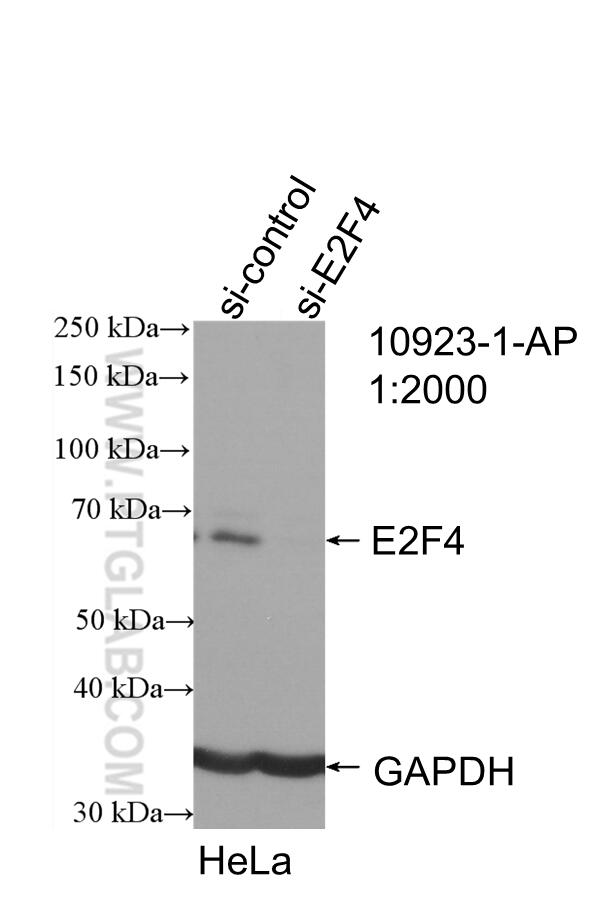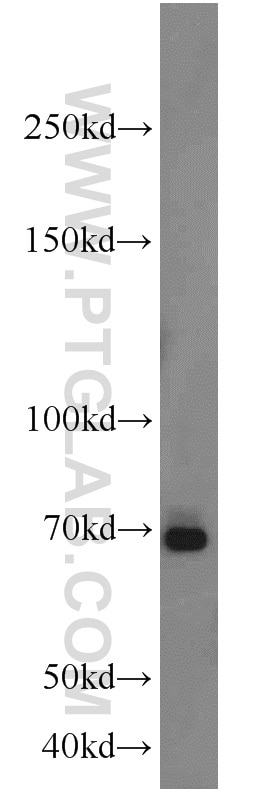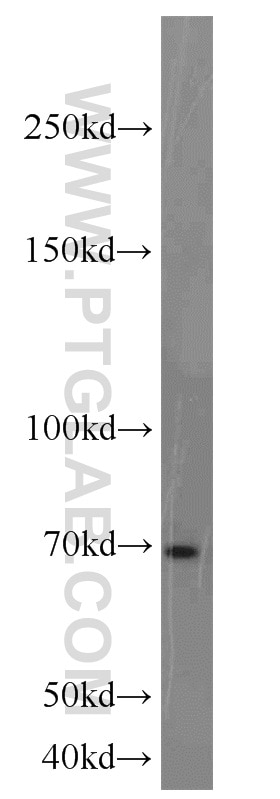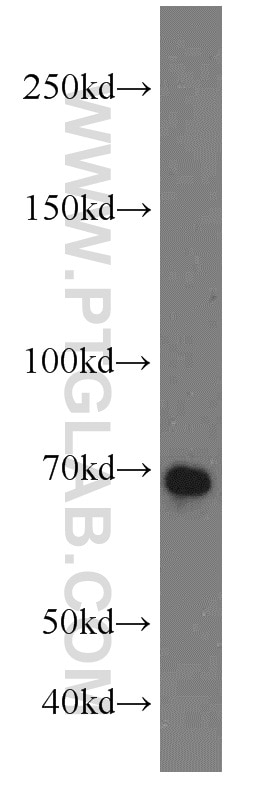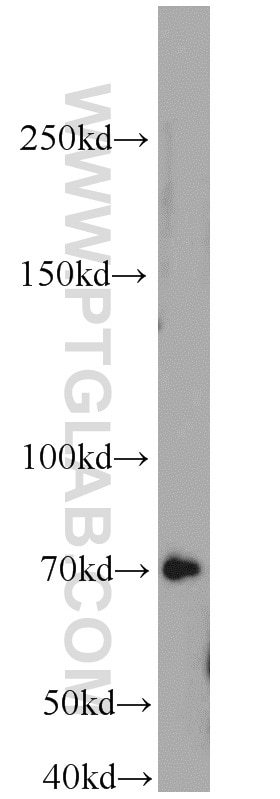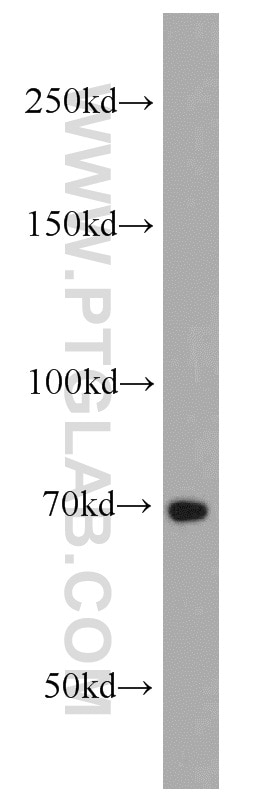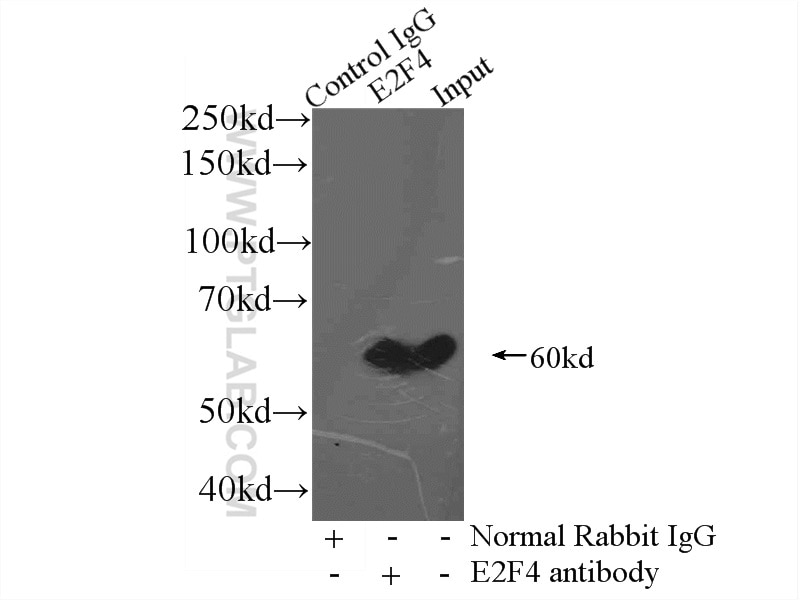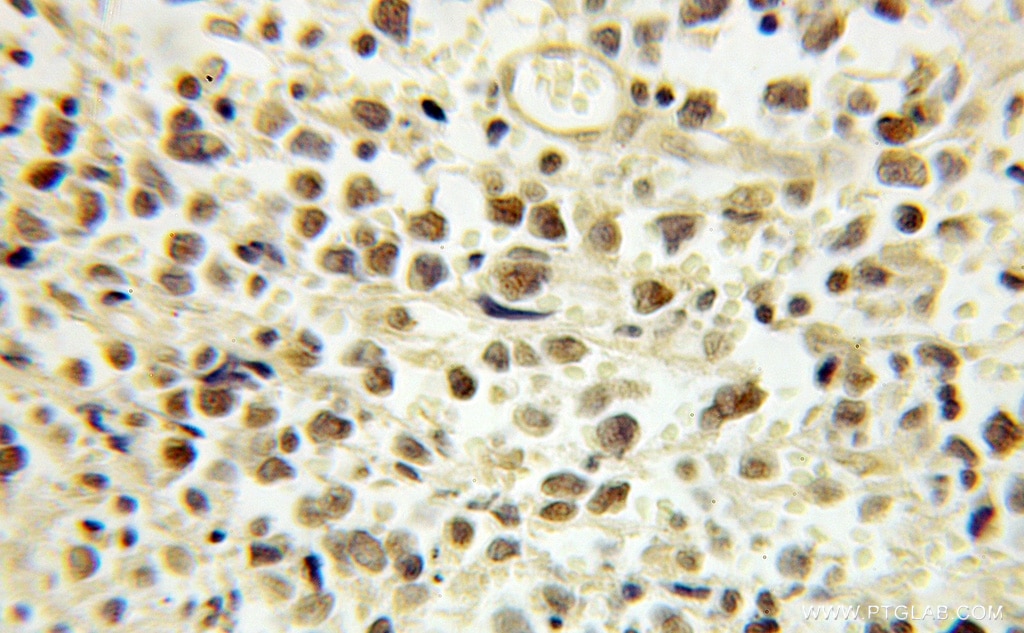- Phare
- Validé par KD/KO
Anticorps Polyclonal de lapin anti-E2F4
E2F4 Polyclonal Antibody for WB, IP, IHC, ELISA
Hôte / Isotype
Lapin / IgG
Réactivité testée
Humain, rat, souris
Applications
WB, IP, IF, IHC, ChIP, ELISA
Conjugaison
Non conjugué
N° de cat : 10923-1-AP
Synonymes
Galerie de données de validation
Applications testées
| Résultats positifs en WB | cellules A431, cellules HeLa, cellules HL-60, cellules Jurkat, cellules NIH/3T3, cellules Raji |
| Résultats positifs en IP | tissu cérébral de souris |
| Résultats positifs en IHC | tissu de lymphome humain il est suggéré de démasquer l'antigène avec un tampon de TE buffer pH 9.0; (*) À défaut, 'le démasquage de l'antigène peut être 'effectué avec un tampon citrate pH 6,0. |
Dilution recommandée
| Application | Dilution |
|---|---|
| Western Blot (WB) | WB : 1:500-1:2000 |
| Immunoprécipitation (IP) | IP : 0.5-4.0 ug for 1.0-3.0 mg of total protein lysate |
| Immunohistochimie (IHC) | IHC : 1:20-1:200 |
| It is recommended that this reagent should be titrated in each testing system to obtain optimal results. | |
| Sample-dependent, check data in validation data gallery | |
Applications publiées
| KD/KO | See 2 publications below |
| WB | See 12 publications below |
| IHC | See 1 publications below |
| IF | See 1 publications below |
| IP | See 1 publications below |
| ChIP | See 2 publications below |
Informations sur le produit
10923-1-AP cible E2F4 dans les applications de WB, IP, IF, IHC, ChIP, ELISA et montre une réactivité avec des échantillons Humain, rat, souris
| Réactivité | Humain, rat, souris |
| Réactivité citée | Humain, souris |
| Hôte / Isotype | Lapin / IgG |
| Clonalité | Polyclonal |
| Type | Anticorps |
| Immunogène | E2F4 Protéine recombinante Ag1365 |
| Nom complet | E2F transcription factor 4, p107/p130-binding |
| Masse moléculaire calculée | 44 kDa |
| Poids moléculaire observé | 60-70 kDa |
| Numéro d’acquisition GenBank | BC033180 |
| Symbole du gène | E2F4 |
| Identification du gène (NCBI) | 1874 |
| Conjugaison | Non conjugué |
| Forme | Liquide |
| Méthode de purification | Purification par affinité contre l'antigène |
| Tampon de stockage | PBS avec azoture de sodium à 0,02 % et glycérol à 50 % pH 7,3 |
| Conditions de stockage | Stocker à -20°C. Stable pendant un an après l'expédition. L'aliquotage n'est pas nécessaire pour le stockage à -20oC Les 20ul contiennent 0,1% de BSA. |
Informations générales
Transcription factor E2F4 (E2F4) is a transcription activator that binds DNA cooperatively with DP proteins through the E2 recognition site 5'-TTTC[CG]CGC-3' found in the promoter region of a number of genes whose products are involved in cell cycle regulation or in DNA replication. The DRTF1/E2F complex functions in the control of cell-cycle progression from G1 to S phase. E2F-4 binds with high affinity to RBL1 and RBL2. In some instances, can also bind RB protein.The observed molecular weight of 60-70 kDa is the phosphorylation of E2F4 protein.
Protocole
| Product Specific Protocols | |
|---|---|
| WB protocol for E2F4 antibody 10923-1-AP | Download protocol |
| IHC protocol for E2F4 antibody 10923-1-AP | Download protocol |
| IP protocol for E2F4 antibody 10923-1-AP | Download protocol |
| Standard Protocols | |
|---|---|
| Click here to view our Standard Protocols |
Publications
| Species | Application | Title |
|---|---|---|
Protein Cell Unveiling E2F4, TEAD1 and AP-1 as regulatory transcription factors of the replicative senescence program by multi-omics analysis. | ||
Ecotoxicol Environ Saf Proteomic analysis reveals that cigarette smoke exposure diminishes ovarian reserve in mice by disrupting the CREB1-mediated ovarian granulosa cell proliferation-apoptosis balance | ||
Oncogene Regulatory networks in mechanotransduction reveal key genes in promoting cancer cell stemness and proliferation. | ||
J Cell Physiol Stable overexpression of p130/E2F4 affects the multipotential abilities of bone-marrow-derived mesenchymal stem cells. | ||
PLoS One Non-steroidal anti-inflammatory drugs decrease E2F1 expression and inhibit cell growth in ovarian cancer cells. | ||
Cell Death Dis Metformin sensitises hepatocarcinoma cells to methotrexate by targeting dihydrofolate reductase.
|
